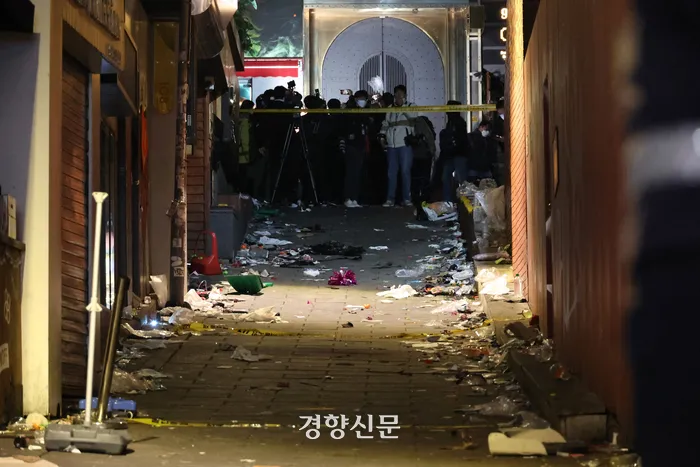Social media, such as Instagram, Twitter, Reddit, etc, has become a platform for creating and consuming content. Hereby, among many other functionalities of social media, it has taken the role of journalism (usually the rawest form of journalism with its feature of first-hand accounts) where the main utility of it is to empower the informed.
One of the biggest differences between social media and traditional journalism is if it has a centralized organizational structure or not. (Traditional ) Journalism has a centralized organizational structure, where reporters write an article and publish it (usually) only after the approval of the head of the organization. But social media is not, since it is a decentralized form of a content-making platform, everyone can participate in the process of reporting on the news without necessarily having certain regulations.

Social media as a form of journalism, allows us to attain a more non-hierarchical reporting system, becoming a place of hosting different voices. However, often how the news is reported by different people on social media displays concerning impacts, especially with some sensitive content. Here, in this blog, I wanted to talk about how social media has been used to report tragic occurrences, and what kind of concerns social media has shown related to that.
Seoul Halloween Crowd Crush and how it is reported through social media.

156 people died in the deadly crash in Seoul Itaewon (이태원) during the Halloween party on the 29th of October. When around over 100000 people were visiting Itaewon to celebrate Halloween, the incident happened in one of the stiff lanes which are close to the main city center street. At the moment there was no civic controller to guide crowds and limit the number of people entering the lane. Since the lane is very stiff and narrow, people crashed into each other and causing so many deaths and injuries.
This kind of tragic event often becomes a collective trauma of the society within which people relate to the disaster directly or indirectly. Therefore, how to unfold social disasters is very important. However, since social media is the platform where everyone can easily access and publish, how the tragedy of Seoul Halloween Crowd Crush was spread out on social media was not as careful ( and mindful) as it should be.
Excessive unfiltered content through social media has been flooded since the time when it happened. Explicit scenes of people crashing and dying were all over the internet, and in most cases without having a mosaic of the victim’s faces. What’s more, so many false accusations of some of the victims as the main cause of the crash incident were happening with these non-mosaic faces videos.
“Harrowing videos and photos from the tragedy have been shared through social media unfiltered. They could violate the privacy of the dead and survivors and can lead to further pain for the survivors. Moreover, they could trigger psychological trauma to a large number of people.”
Emergency Statement issued by Korean Neuropsychiatric Association
It is important to be informed about tragic events and to remember them in order to not repeat the same events. However, excessive exposure to these tragic events through unregulated, unfiltered content harms people. Also, these unfiltered contents of social media result in secondary victimization toward survival and family of victims. One of the features of social media is the unpredictable distribution of its content. Once something is uploaded, it is hard to delete and remove what has been there from the online platform. Since all of the live footage of this tragedy is everywhere on social media, it is easy to encounter them even for the survival and family of the victims, which hinders their recovery from this trauma.
The Ethics of Disaster Reporting
With this excessive unfiltered content in social media, the Ethics of Disaster Reporting written by the Journalists Association of Korea is emphasized again by raising awareness of the danger of unfiltered reports in social media.
According to the Ethics of disaster reporting, the aim of reporting disasters should only be about informing people with the right information about the disaster in order to protect people (on the both governmental and individual levels.) Since reporting disasters has the possible function of emergency response and forming recovery, people should aim to pursue that value when they report something tragic like Seoul Halloween Crowd Crash. By reducing the possible harm through their reporting, the minimal thing that reporters should follow is to try to deliver only correct information and to be careful with sharing the personal information of victims of the disaster.
Even with the centralized organizational structure of journalism, they often don’t comply with the ethics of disaster reporting for many reasons, including the intention of gaining more views by using an explicit image. However, as they have an organizational structure, it is clear to people that where people can ask for modification and follow-up feedback is, when the articles have the possibility of harming people.
Also importantly, while journalists have been aware of the effect of their reporting with many organizational regulations and their formal education, social media users haven’t been aware of this.
This debate is not black and white as if social media reporting is bad while all journalism is good. However, we need some regulations to report news even on social media, especially when the news involves so many deaths. How we unfold the narratives affect how we remember this. Therefore, people should be careful with what they create on social media.
References
What is the purpose of journalism? – American Press Institute
Social Media vs. Traditional Journalism | by Ellie Mason | Medium


I thought about this when the incident was happening as well because on traditional media, there was no photos or videos that showed what and how it happened. I had some questions because I also didn’t really understand how people could get stuck on the street. But on tiktok, I got to know it when people actually explained the situation and had some conspiracies of how the authorities’ responsibilities played a role in this event, which was usually never mentioned on centralized media platforms. So in my opinion, unfiltered contents are indeed terribly painful to watch, but it is just a part of how decentralized social media work with both pros and cons
In my opinion, the amount of unfiltered content is still the biggest issue with social media. Same with the fact that anyone can easily post a photo or video of you on Instagram or elsewhere and leave it there for anyone to see. If this then concerns a tragedy like this one that gets even worse. I can’t even imagine the horror and pain friends and families of victims go through when encountering their lost person’s face on social media while looking for distraction, or for survivors to constantly relive these events, spiralling deeper into a traumatic state. Another issue I see with this is the spreading of wrongful accusations and misinformation. The amount of times I have seen pictures linked to news articles or post (social media and ‘serious’ reporting) that were actually taken in an entirely different context and years ago, just to get those clicks and likes is absurd.